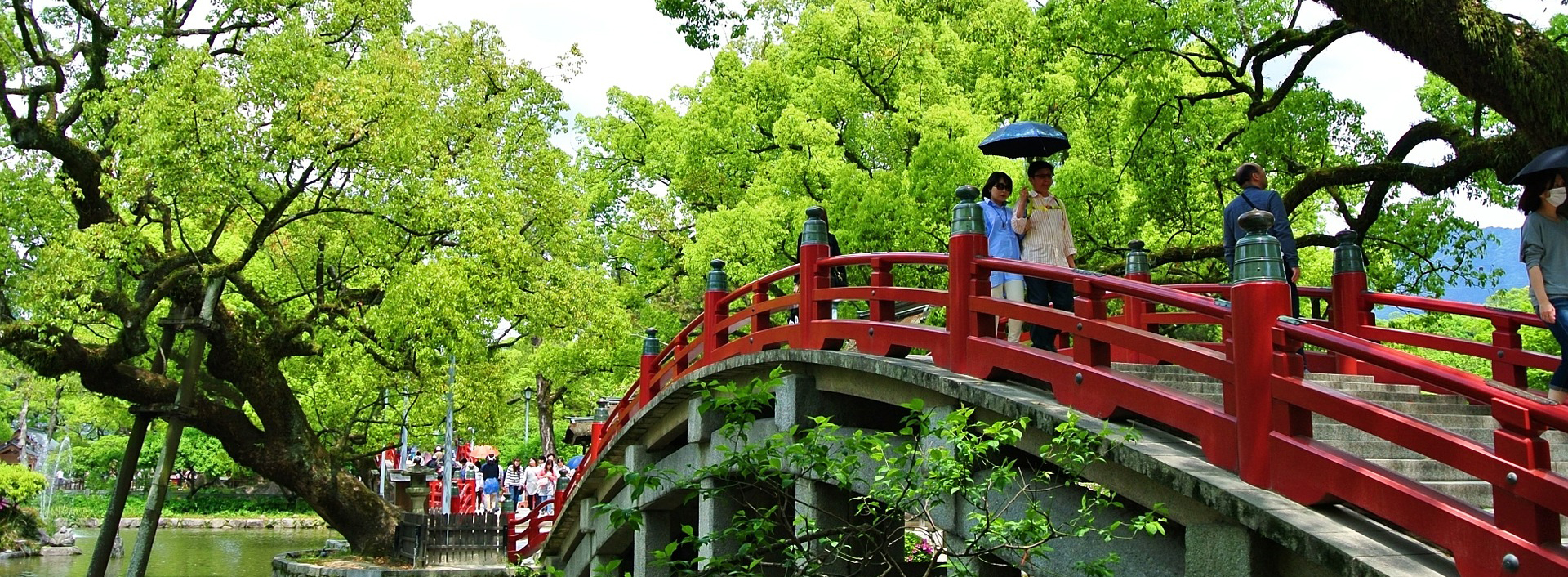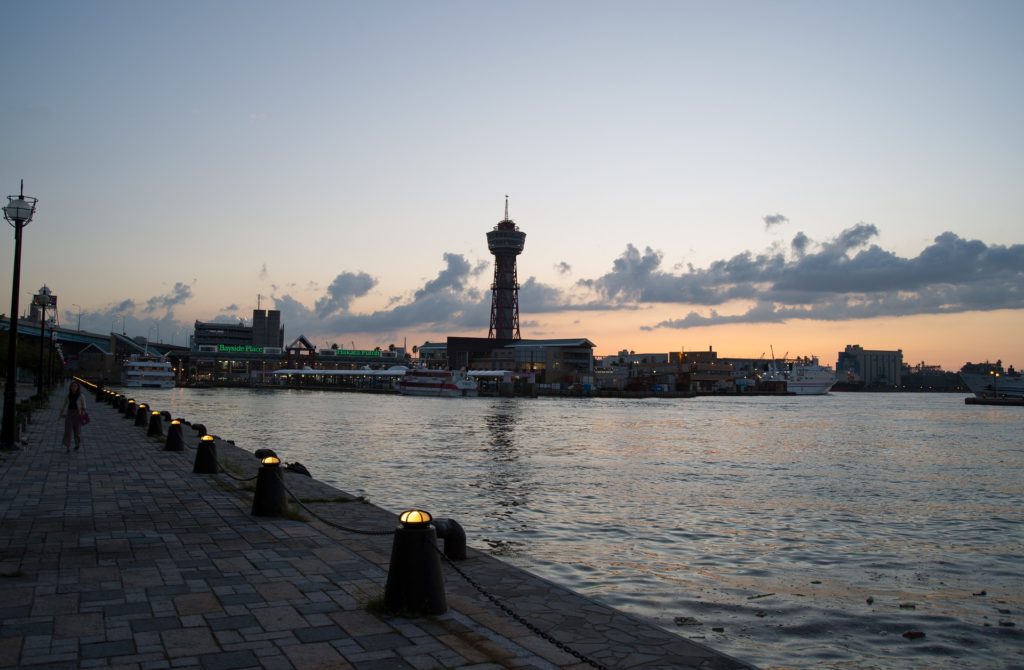
Situated on the Japanese island of Kyushu, bordered by mountains and the Sea of Genkai, Fukuoka is a large, populous city that has centuries of historical significance, being a former castle town and premiere harbour city.
How To Get There
There are four ways to access Fukuoka — by air, Shinkansen, bus, and ferry.
Fukuoka Airport serves several flights a day from various parts of the country. From Tokyo’s Haneda or Narita Airport, flying via ANA, JAL, and budget carriers like Peach, Jetstar, Skymark, or Starflyer takes about two hours. Ticket fares cost between 6,000 yen and 45,000 yen.
The Tokaido/Sanyo Shinkansen operates direct connections between Tokyo and Fukuoka multiple times a day. A one-way ride costs 23,000 yen and takes approximately five hours.
An overnight bus ride from Tokyo’s Shinjuku Station to Fukuoka requires fourteen and a half hours of travel, and a one-way ticket is available from 11,000 yen to 20,000 yen, depending on time and date of departure and seat type.
Travelling by ferry takes the longest time, as a one-way journey via the Ocean Tokyu Ferry from Tokyo Ferry Terminal in Odaiba to Shin-Moji Port in Kitakyushu takes 34 hours and costs at least 16,000 yen. It takes another hour or so to get to the city centre by local trains or Shinkansen.
Top Attractions
Fukuoka Castle Ruins
Between 1603 and 1867, Fukuoka Castle was the largest castle standing on Kyushu, right in the heart of Maizuru Park. However, after the Meiji Restoration, it was destroyed to bits to get rid of any memory of feudalism in the region. Today, only the castle ruins remain, and the park is one of the area’s most popular cherry blossoms viewing spots.
Shofokuji Temple
Constructed in the late 12th century by Eisai, a priest who brought Rinzai Zen Buddhism from China to Japan, Shofokuji Temple is Japan’s first Zen temple. The temple complex bears the common Zen temple style — structures made of wood with intricate carvings, a pond with a bridge, and golden and wooden Buddha statues everywhere.
Canal City
Comprised of more than 200 restaurants, cafes, shops, and other establishments, Canal City is a large and spacious entertainment complex that offers both local goods and international brands. Its fifth floor houses the famous Ramen Stadium, where you can feast on Hakata Ramen and other delicious noodle dishes and specialties.
Yatai
Every night at around 6, several small, open air food stalls open along the river in the middle of the city. Known as yatai, these food stands can accommodate only about six to eight people at a time, and serve yakitori, oden, ramen, and other local dishes, with a variety of alcoholic drinks and beverages. They are open up to as late as 2 am, and usually only close on Sundays.
Momochi Seaside Park
A park with a great view of Hakata Bay, Momochi Seaside Park features modern multi-storey buildings and wide streets lined with trees. It is where the Fukuoka Tower stands, a 234-meter structure with an observation deck that offers scenic views of the city. It has an artificial beach where people can swim and play sports, and check out shops and restaurants. Kyushu’s only professional baseball team, the Softbank Hawks, plays at the Fukuoka Yafuoku Dome, which is also in the vicinity.

Uminonakamichi Park
Built on a peninsula across the bay, Uminonakamichi Park is a large public park that is home to many flower gardens, spacious lawns, playgrounds, an amusement park, a water park, and a zoo. It can be explored on foot or by cycling. It grows more than 2,000 cherry trees, which are a sight to behold during peak sakura season.
Ohori Park
Known for the large pond at its centre, Ohori Park is a nice and laidback park in Fukuoka’s downtown area. It houses the Fukuoka Art Museum, which has a collection of 11th century Buddhist statues; the Ohori Park Japanese Garden, which is made up of different Japanese garden styles and a number of tea houses; and the Gokoku Shrine, which has a gigantic torii gate and golden main shrine.
Getting Around
Fukuoka has a train, subway, and bus network.
Hakata Station is the city’s primary station where the Shinkansen and other long-distance trains to and from Tokyo, Nagasaki, Kyoto, Osaka, Hiroshima, Himeji, and other major cities stop.
The city subway lines run through Hakata Station, Tenjin Station, and Fukuoka Airport, and can take you to some of the city’s major sights, such as Canal City and Ohori Park.
The bus known as 100 Yen Bus runs every ten minutes or so, and follows a loop around the Hakata Station and Tenjin Station areas, giving you easy access to the attractions in the downtown area.
For convenience, get a prepaid IC card once you arrive in Fukuoka. There are three types available: JR Kyushu’s Sugoca, Nishitetsu Railways’ Nimoca, and Fukuoka Subways’ Hayakaken. All three can be used on Fukuoka’s trains, subways, and buses. Some of the other IC cards, such as Suica, PASMO, and Icoca can also be used in the region.
If you expect to travel by bus and train several times in one day, look into getting the Fukuoka Tourist City Pass, which comes in two types: the 820 yen pass, which can only be used in central Fukuoka, and the 1340 yen pass, which also includes travel to and from the nearby town of Dazaifu. It is available for purchase at the tourist information centres at Fukuoka Airport and Hakata Station.
For unlimited subway-only rides in one day, the 1-Day Subway Pass is an economical option. It costs only 620 yen when bought and used on weekdays, and 520 yen on Saturdays, Sundays, and national holidays. It is available at the ticket vending machines found in subway stations throughout the city.
Weather
Because of its location, Fukuoka experiences mild winters and very hot and humid summers.
Winter temperatures vary between 3 degrees Celsius and 13 degrees Celsius, and snow very rarely happens. In spring and autumn, the weather is generally pleasant, with daily temperatures falling somewhere between 10 and 20 degrees. In summer, the hottest daily temperatures can rise up to 37 degrees Celsius, and the months of June, July, August, and September see a lot of rain due to typhoons.
